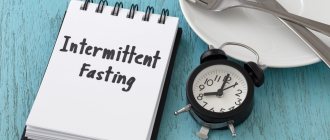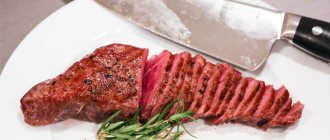Scientific background
The principle of action of the diet is based on the mechanisms of autophagy described by microbiologist Yoshinori Ohsumi. Translated from Greek, the term “autophagy” means “self-eating.” This is a natural process in which living cells recycle components of themselves. Thus, they maintain their vitality or acquire new properties.
The phenomenon has been known since the 60s of the 20th century, but its mechanism was revealed in detail only half a century later. For his description of the principles of autophagy, Yoshinori Ohsumi was awarded the Nobel Prize in Physiology or Medicine in 2016.
The scientist has proven that self-recycling of excess cell parts (which include toxins, defective proteins, infectious agents) has a positive effect on the condition of the entire organism.
Autophagy affects the body in the following ways:
- slows down the aging process,
- strengthens the immune system,
- normalizes the functioning of organs.
In simple words, cells, digesting unnecessary parts of themselves, are renewed.
Thanks to this, the whole body feels better. One way to activate the autophagy process is to reduce the amount of calories consumed.
Autophagy: a mechanism in simple terms
We have saddled our favorite horse, hang in there, purists! Now, having learned about autophagy, everyone has suddenly rushed to “cleanse and become younger,” because supposedly fasting once a week prolongs life and is the most correct cleansing of the body. But alas, this is not the case again.
The whole problem is that the eminent scientist, as always, was not understood and another “pill for cancer, old age and death” was trumpeted all over the world. But first things first.
What is it and why is it necessary to eat your own flesh?
In 2016, the Japanese scientist Yoshinori Ohsumi won the Nobel Prize for his research into the mechanisms of autophagy (emphasis on the second a). The term “autophagy” itself appeared in the 60s of the last century.
It began to be used in relation to the cellular mechanisms of cleansing the body of degraded proteins. Scientists have found that using this process, the cell is cleared of intracellular debris, sending it to lysosomes.
Despite the fact that the process has been known to scientists for a long time, its details remained unstudied. So, our 2016 Nobel laureate proved the existence of autophagosomes and that, thanks to them, cells feed on unclaimed elements stored in lysosomes.
The fact is that for a long time it was believed that lysosomes are a kind of landfill that does not provide any benefit, and everyone was tormented by the question: “but why don’t lysosomes increase in size, do not inflate like balloons, where do the waste products of the cells accumulated in them go? ?.
And so the Japanese discovered autophagosomes , which break down “garbage” into amino acids to help the cell get rid of what is not in demand. And what do cancer, aging and starvation have to do with it? This is out of the question!
Yes, it is self-eating that allows most body tissues to survive the lack of resources. For cancer cells, autophagy has proven to be a remarkable survival tool .
Even if the body for some reason does not supply the tumor with nutrients, it does not die, precisely because its cells use their own energy reserves, relying on the processes of autophagy. Those. You need to be treated not by fasting, but on the contrary, find out how you can stop this process in the tumor!
With the help of autophagy, cells get rid of their potentially dangerous components. If some organelles do not work as they should, or some protein molecules have the wrong structure, autophagosomes destroy them.
In most cases this is good, especially for long-lived cells. But in Parkinson's and Alzheimer's diseases, autophagosomes and lysosomes do not have time to degrade these proteins.
For autophagy, it does not matter which proteins are destroyed - those formed in the cell itself or outside it. This means that with its help you can get rid of viruses and bacteria that enter cells and cause various diseases.
It has been shown that pathogens of viral and bacterial diseases, in the course of evolution, develop complex defense mechanisms in order to avoid the hot hand of autophagosomes or to stop their action. In general, autophagy is important for many processes in the immune system, from inflammation to defense against viruses and bacteria.
How to launch correctly
Let's move on. Many did not understand an important fact: Yoshinori Ohsumi was not given the Nobel Prize for fasting and its proven benefits! In fact, autophagy is not directly related to fasting. This mechanism never stops working; it is constant.
There are about 37 trillion cells in the human body, and of these, in the average adult, approximately 220-240 billion die and are replaced by new ones every day. This is approximately 2 million cells per second.
Different organs have different cell lifespans - the intestines are about 4 days, the skin is 12-20, and so on. By the time you've read this far, about a million cells have been replaced by new ones.
Those. It is impossible to completely cleanse yourself of all decay products stored in cells. While you (figuratively speaking) cleaned 10,000 of some cells, they formed again in a million others.
It's like taking a huge enema to clean out your colon once and for all. This is simply impossible - in any case, it will become clogged again. For us, this is a fight against windmills.
Why is everyone connecting fasting and autophagy? Hunger simply activates this process and makes it more accelerated. The body, which ceases to have enough nutrition from the outside, begins to use its own resources, i.e. fasting goes through the process of autophagy - therefore (and for many other reasons) during a fast, it is not fat that is lost first.
After how many hours of fasting does the process start?
This question torments many, but alas, there is no truthful answer to it. Yes, logically, hunger stimulates the process of autophagy. But how much? How long do you need to go without food? Will one-day fasting have any effect?
Will the amount of time be the same for all people, what will influence it? What will happen with cancer and oncology or multiple sclerosis? Is it important what exactly you ate before the hunger began and how much?
Will the fact that you smoke, drink kefir, algol or cocktails spoil autophagy? What enhances it, how are insulin injections and autophagy related, does ketosis and the lchf diet make autophagy more effective?
The answer is stunning and honest: no one knows . Whoever finds out will probably be given a Nobel Prize, and you and Yoshinori will fraternize.
It is now assumed that the more often we eat, the closer our autophagy is to baseline. The less often and less, the more active it is. However, autophagy is also a finite process and at some point your fasting will turn into starvation, in which your body begins to consume healthy cells in order to survive. When will this happen? Depends on your amount of fat and other indicators.
Our verdict: everything is too vague for now to draw any big conclusions. Yes, it exists. Yes, the cells are cleansed. That's all for now.
No, it is not necessary to starve to trigger autophagy, purely technically - this is not a side process that occurs only during hunger, but one of the main processes in the body, and its disruption is one of the main causes of metabolic disorders. But fasting will make it worse. What kind of fasting and to what extent: intermittent, daily, 16 to 8, dry, wet - it’s not clear.
Now there are a bunch of experts who talk about autophagy as a super studied and understood process. But that's not true.
We are always amazed at how willing people are to trust any information that aligns with their beliefs. We read an article written by a copywriter on some shabby website/self-published book/watched a video of a guy with eyes glowing with madness - and that’s it, they believed it. The truth about autophagy now is this: some things are clear, but even more are unclear.
What is the 16 by 8 system?
The optimal regimen for triggering autophagy is a regimen with 16-hour intermittent fasting and an 8-hour “eating window” (the time during which you can eat).
For example, a person eats between 9 and 17 hours, fitting 3 main meals and several snacks into this period. For the rest of the day, he limits himself to drinking.
The operating principle of the 16/8 system is as follows:
- during the 8-hour period of the day, the body receives useful substances necessary for normal life support;
- during the 16-hour “hungry” period, the process of autophagy starts. This occurs 12 hours after the last meal. The start of the process is associated with a decrease in the level of the hormone insulin, which is responsible for the transfer of nutrients into cells. 12 hours after the last meal, the insulin level drops to a minimum, the cells begin to starve, and only after that the self-utilization mechanism is activated;
- It takes time to remove harmful parts of cells - at least two hours from the moment autophagy starts. That is why an interval of 16/8 is proposed to obtain maximum effect.
To summarize, with the “16 to 8” diet, the day is divided into two intervals: an 8-hour period when you can eat, and a 16-hour period when you need to fast. It is during intermittent fasting that the autophagy mechanism is launched - the body's cells are renewed, toxins are eliminated, and weight is reduced.
Pros and cons of the 16/8 diet
Many scientific works are devoted to the study of various methods of this system. A large-scale study was recently conducted in the USA. Published findings indicate that it is the 16/8 regimen that is most effective and safe for health.
But there are also critical assessments of the results obtained. The skeptics' arguments boil down to the fact that the experiments were carried out on rodents, whose metabolism differs significantly from that of humans.
Another disadvantage of the diet can be considered side effects, which the authors of the publications initially kept silent about. Among the undesirable consequences of intermittent fasting were headaches, general malaise, and indigestion.
The “16/8” technique is also known by the following names:
- fasting diet (from English fasting - “fasting”);
- Interval (cyclic, cascade, intermittent) fasting.
These terms clearly reflect the essence of the system: periods during which you can and cannot eat alternate with a given cyclicity.
Answers to frequently asked questions
This section discusses the most controversial situations and questions regarding the 16/8 regime:
- Is the 16/8 protocol suitable for women? As already mentioned, the female body is more sensitive to limited nutrient intake. It is recommended to change the standard pattern (for example, fast for 12-14 instead of 16 hours). You should also adhere to the method not on an ongoing basis, but periodically: several times a week (for example, Monday, Wednesday, Friday) or every other day.
- How long can you eat according to this system and how often? If the diet is well tolerated by the body, there are no restrictions regarding the duration of fasting. If adverse reactions develop, you should seek the support of a doctor.
- Is it possible to follow the regime during pregnancy? Such fasting negatively affects the state of a woman’s reproductive system, which can lead to an unfavorable pregnancy outcome. In addition, the health of the fetus is negatively affected by the unsystematic intake of nutrients into the mother’s body that are essential for adequate growth and development. Conclusion: the technique is prohibited during pregnancy.
Who is the fasting diet suitable for?
The 16/8 intermittent fasting system can be practiced by healthy people who want to lose weight and do not have acute or chronic diseases. For successful adherence to the scheme, willpower, the ability to adapt, and the ability to combine work and routine are also important.
Research shows that many people who are losing weight find it difficult to adhere to the rules recommended by the plan.
Frequent reasons for violation of the regime:
- work schedule in which it is impossible to find time for snacks,
- working conditions in which it is impossible to bring and store containers of food at work.
- There are difficulties with regular training.
Going to the gym requires money and free time, which makes fitness not accessible to everyone. From a medical point of view, intensive training on exercise machines is contraindicated for people with excess body weight: forceful exercise creates a risk for the musculoskeletal system, heart and blood vessels.
The “16 to 8” nutrition system is intended for healthy people without acute or chronic diseases.
Intermittent fasting: contraindications
As with any food system, there are pros and cons. When you should not adhere to this nutritional method:
- if you have any immune diseases
- if the liver and kidneys are impaired, it is not recommended to follow the principles of IG
- Complaints of stomach pain during fasting are very often observed, which is associated precisely with the presence of diseases that are incompatible with this food system. It must be remembered that the presence of various diseases of the gastrointestinal tract is a powerful argument not to adhere to such a plan. This is especially true for diseases such as gastritis.
- while leading a very active lifestyle.
- under severe stress, as well as if you have neurosis or insomnia.
- You should also not start intermittent fasting if you are sick or simply not feeling well. You can practice this technique only if you are healthy and do not complain about your health.
- Separately, pregnant and lactating women should be noted; this nutritional system is not suitable for them.
In any case, before making such an important decision, you should definitely consult your doctor to eliminate any possible risks.
Question answer:
- Which is better - intermittent fasting or intuitive eating ? Comparing these two methods will not be entirely correct, because the IG has clear rules that must be followed, while the individual entrepreneur leaves the right of choice to the person.
- Fractional meals or intermittent fasting Here everything is very individual, but it should be said right away that IG is not suitable for people who need to eat frequently and in small portions. Typically, fractional nutrition is practiced in the presence of various gastrointestinal diseases.
- Is it possible to drink coffee during intermittent fasting Yes, on this nutrition system it is not only possible, but also necessary to drink coffee to suppress the feeling of hunger. The only point is that it must be an unsweetened drink.
- How much weight can you lose with intermittent fasting ? As a rule, with large volumes, weight comes off faster, and very often overweight people lose up to 7-10 kg in the first month of such a system. At the same time, everything here is individual.
- Intermittent fasting and training You can train during IF, the main thing is to properly balance your diet on these days. Be sure to have protein and slow carbohydrates on such days. It is also very important to choose the right time for classes. Here you focus on your feelings and well-being.
- Intermittent fasting in bodybuilding This method is actually practiced in bodybuilding, especially during the cutting period. On such days, it is best to train on an empty stomach to burn the maximum number of calories. In addition, it is better to consume the maximum amount of calories after training.
- Intermittent fasting while gaining weight Surprisingly, this method is also practiced when gaining weight - alternating high-calorie days and low-calorie days. This method is much more convenient than counting calories.
- Constipation during intermittent fasting This phenomenon can indeed occur, but not only during IF. This is usually a consequence of low fiber intake. You should definitely include fresh vegetables and fruits in your diet to avoid such problems.
As you can see, IG is an excellent technique that really works! You will not only be able to lose weight, but also improve your well-being and get rid of bad habits. The main thing in this matter is the right approach and compliance with all the rules. And, of course, do not forget to consult your doctor!
What determines the effectiveness of the 16/8 scheme?
The result of losing weight depends on the individual capabilities of the body and its ability to withstand the regime. For the course to be effective, you must strictly adhere to the diet rules and additional conditions that guarantee the best result.
Rules and conditions of intermittent fasting:
- Adequate drinking regime. Drinking enough fluid daily regulates appetite and reduces the risk of uncontrolled overeating.
- A full night's sleep. You need to sleep at least 7–8 hours a day. It is advisable that rest occurs at night - this creates the best conditions for restoring strength and relaxing muscles.
- Positive attitude. Getting ready to lose weight is easy if you motivate yourself correctly. If positive emotions give way to despair, it is recommended to seek help from a doctor.
- Workout. Physical activity is an important factor for weight loss. Regular fitness classes and even simple daily exercises improve your appearance, improve your mood, and improve your health. It is advisable to walk for at least half an hour every day - this will reduce the risk of heart and vascular diseases.
After completing the fasting diet, it is recommended to check your health status. Weight loss may be accompanied by side effects associated with mineral imbalance and hypovitaminosis. To eliminate them, doctors prescribe multivitamins.
Useful tips
Nutrition 8/16 for weight loss is considered the most gentle, unlike most strict diets, and does not require any special preparation. However, experts recommend that before starting intermittent fasting, consult a doctor and undergo a full medical examination, including studying hormonal levels, and taking blood tests for sugar and tumor markers.
Such a measure will help prevent the negative impact of dietary restrictions on the gastrointestinal tract, insulin production and the possibility of exacerbation of chronic pathologies.
In addition to the examination, during the diet you should:
- compose a daily diet from an optimal set of products, the most balanced in terms of the amount of micronutrients and vitamins;
- strictly adhere to the drinking regime.
Before starting a diet, it is necessary to create an optimal daily regimen for the body, distributing the time of meals, rest and sports training.
Approximate schedule:
| 7:00 | Awakening |
| 7:30 | Morning sports warm-up |
| 8:00 | Breakfast |
| 14:00 | Dinner |
| 17:00 | Dinner |
| 17:30 | Evening sports training |
| 18:30 | Walk in the fresh air |
| 22:00 | Going to bed |
Physical training should be divided, moving some of the classes to the morning, since it has been proven that light sports activity preceding nutrition promotes faster weight loss.
After waking up, to dull the sudden feeling of hunger, you can drink a glass of water or a cup of unsweetened coffee, which helps the body wake up and dull the feeling of hunger.
Benefits and results of the 16/8 regime
Due to the acceleration of metabolism, the fasting diet also has a positive effect on the condition of the gastrointestinal tract and skin. Impurities and toxins are removed from the body, restoration processes in tissues are accelerated, and skin cells are rejuvenated.
The effect of fasting diet on the body:
- If the fasting diet is followed correctly, significant weight loss is observed. The effect is due not only to limiting the number of calories consumed during the day, but also to improving metabolism, which directly affects weight loss.
- An important advantage of the technique is blood sugar control. According to the US National Institutes of Health, intermittent fasting reduces fasting insulin levels by 31% and lowers blood sugar levels by 3-6%, potentially reducing the risk of diabetes.
- Reducing blood pressure, preventing cardiovascular diseases and atherosclerosis are associated with a decrease in blood cholesterol levels (lipids are reduced by 32%, low-density lipoproteins by 25%).
- Longevity. Interval-based weight loss practices can increase life expectancy in the long term. Although there is little direct evidence of this effect on people's lives, research shows that interval training can promote longevity.
The popularity of the “16 by 8” weight loss system lies in its flexibility and easy adaptation to the living conditions of a particular person. The nutrition window can be shifted to a convenient time of day, depending on your work schedule and lifestyle.
What to do if you can't lose weight?
It happens that people strictly follow all the rules of the diet, but the weight does not come off, or it comes off very slowly. There are low-impact tricks that can slightly speed up your momentum and the fundamental principles that we will focus on.
Remember that we specifically did not indicate the portions of dishes in our version of the weekly diet? We did this for a reason. Every person requires a certain amount of calories to lose, maintain or gain weight. This calorie intake is determined based on weight, height, age, physical activity level and other factors.
If you're consuming more calories than your body needs to lose weight, you'll need to either reduce your portion sizes or increase your physical activity to burn off some calories throughout the day and create a caloric deficit.
You can calculate your personal calorie requirement for weight loss using the Harris-Benedict formula using our calculator:
If this figure is very different from your usual norm, then you should gradually reduce the caloric content of your diet so that it does not cause stress for the body. To calculate the calorie content of ready-made dishes, you can use our table.
Cons of Intermittent Fasting
Like any weight loss method, the fasting diet has its drawbacks.
Let's take a closer look at them.
Disadvantages of the 16/8 system:
- Due to a small amount of food, the production of gastric juice is disrupted and its volume decreases. As a result, the protective barrier that prevents pathogenic microbes from entering the body deteriorates;
- the quick effect is due not to the burning of fat, but to the removal of water. As a result, ketone bodies, formed during the breakdown of proteins, accumulate in the blood. This is dangerous due to headaches, nausea, dizziness, and general deterioration of health;
- a lasting effect is not guaranteed - the lost weight will return after a couple of weeks, during which the body normalizes water balance and restores the ratio of fat and muscle mass;
- Lack of nutrients in the diet leads to changes in the balance of hormones. Hormonal imbalance is manifested by a temporary deterioration in the psycho-emotional state, and in severe cases – depression.
Fasting according to the 16/8 scheme is fraught with disturbances in general well-being: headache, dizziness, drowsiness, sensation of spots and circles before the eyes.
You cannot fast using the fasting diet method if there are contraindications . The occurrence of any unwanted effects indicates that the body is not ready for intensive weight loss, and the stress associated with hunger can aggravate the problem.
If side effects occur, the regimen should be interrupted and a normal diet should be returned. Subsequent experiments with weight loss can only begin after consultation with a nutritionist.
Safety, side effects
Short-term fasting 16/8 is an extremely convenient and easy-to-follow method of correcting health conditions. However, any method has its drawbacks.
According to recent scientific research, intermittent fasting is less beneficial for women than for men. Women should choose more “gentle” options and stick to the technique several days a week or every other day.
Scientists from the USA claim that 3 weeks of a “hard” intermittent fasting regime (24 hours of fasting every other day) negatively affects the sensitivity of peripheral tissues to insulin.
Prolonged fasting also affects hormonal balance.
Women should not follow this regimen during pregnancy. According to Polish experts, limiting the supply of nutrients leads to a decrease in the production of gonadotropin-releasing factor, which is responsible for the secretion of hormones necessary for the correct functioning of the woman’s reproductive system and the normal development of the fetus.
The absence of these biological substances is also fraught with the development of infertility, osteoporosis and other adverse effects. Experiments on rats found a decrease in ovarian volume (with fasting for more than 3 months).
The 16/8 partial fasting protocol is also contraindicated in the following conditions:
- Low body weight (BMI less than 18.5).
- Tuberculosis.
- Diabetes mellitus type I.
- Hyperthyroidism.
- Tachysystolic forms of arrhythmias and AV block of II and III degrees.
- Condition after a myocardial infarction (within a month from the moment of the vascular accident).
- Chronic heart failure (IIb-III degree).
- Liver diseases (chronic viral hepatitis, cirrhosis).
- Chronic renal or liver failure.
- Hypertension or symptomatic arterial hypertension.
- Diseases of the digestive system. This group includes: peptic ulcer of the stomach and duodenum, cholelithiasis.
- Age over 75 or under 14 years.
- Pregnancy and breastfeeding period.
When following a diet, the following side effects occur:
- headache;
- constipation;
- dizziness;
- weakness;
- drowsiness;
- photopsia (floaters, sticks before the eyes).
Following a diet against the background of contraindications is unacceptable; the development of side effects indicates serious abnormalities in the body that developed during the restriction of food intake.
If any side effects occur, it is recommended to consult your doctor. Only a specialist can competently assess the state of the body and make a decision regarding the advisability of using this option of intermediate fasting.
Doctors' opinion on the 16/8 fasting diet
Gastroenterologists and other specialists have criticized the system.
The main objections of doctors to the mass craze for the fasting diet come down to the following theses:
- The canons of proper nutrition are violated: after hunger, a person is prone to overeating and eats more food. The stomach stretches, and subsequently it becomes difficult to achieve a feeling of fullness.
- The enzymatic system fails. Under normal daily conditions, the largest amount of enzymes is produced at 12–14 o'clock in the afternoon. This is the time for a full lunch, whereas for a person losing weight according to the 16/8 scheme, only the first meal occurs during this period.
- Uneven alternation of intervals of hunger and satiety is dangerous for the pancreas. Malfunctions in its operation can cause sharp fluctuations in glucose levels. At first this manifests itself as low performance, headaches and low mood, and in the future it threatens diabetes.
Nutritionists and gastroenterologists still consider the classic regimen optimal for health - with intervals between meals of 4 hours.
This is exactly how much is needed to start lipolysis, the metabolic process of fat breakdown. This technique is advisable both when you need to lose weight and to maintain the overall health of the body.
Principles of the 16/8 system
Without consulting a nutritionist, it is recommended to conduct only short-term sessions of the fasting diet - lasting no more than a day. During times of hunger, you need to carefully monitor your feelings and health.
Deterioration in performance, impaired concentration, weakness, dizziness and other side effects are reasons to stop the experiment.
If you still decide to try, let's move on to the principles of the 16/8 system
The 16/8 intermittent fasting scheme requires compliance with the following conditions:
- Fractional meals - at least three meals every 8 hours.
- Strength training on an empty stomach with preliminary consumption of amino acids (10 g per glass of water). The amino acid complex can be purchased at a sports nutrition store.
- Breakfast from products based on complex carbohydrates. Lunch and dinner - with an emphasis on protein foods.
The 16/8 system varies in duration:
- long-term (permanent) – designed for 30 days or more of compliance with the rules;
- average in duration (also called periodic or alternating) - “hungry” days are arranged at certain intervals;
- short – one fasting day.
The choice of mode, number of calories, ratio of BZHU depends on the final goal:
- strengthen the immune system, strengthen the body's protective functions;
- build muscle mass;
- lose weight.
Diet rules for weight loss
The rules are designed to obtain the greatest effect from losing weight, as well as to minimize the risk of side effects such as disruption of general well-being, deterioration in performance and digestive problems.
Follow these rules if you choose a fasting diet.
The 16/8 fasting diet involves following the following rules:
- do not exceed the daily calorie intake, taking into account age, height, weight and lifestyle;
- create a healthy diet (exclude fast food, flour, sweets, fatty and fried foods, smoked foods, semi-finished products);
- during “hungry” hours, drink only clean water, unsweetened tea, coffee;
- drink 1.5–2 liters of fluid daily;
- include physical exercise in your daily routine (due to intense training, fat deposits will be burned, not muscle mass);
- Between main meals, have snacks made from whole fruits and vegetables.
How to prepare for the 16/8 diet?
To reduce stress while adapting to a new lifestyle, advance preparation is recommended. It must be started at least two weeks before the expected unloading. What should you do at this time?
Reduce the daily amount of calories: bring the diet into line with the recommended norm and subtract 10-15% from it.
The individual rate is calculated using the Basal Metabolic Rate formula, derived by Harris-Benedict.
Basic calorie expenditure formula:
| Men | BMR = 66 + (weight in kg × 13.7) + (height in cm × 5) – (age × 6.76) |
| Women | BMR = 655 + (weight in kg × 9.6) + (height in cm × 1.8) – (age × 4.7) |
Before using the technique, you should check your health status and obtain permission from a doctor. A comprehensive medical examination and tests will help to objectively assess the body’s readiness for a diet.
Preparatory steps:
- Keep a food diary where you can enter your diet data and count calories. When planning a diet, this information will help you optimally distribute foods between meals.
- Calculate the individual norm of BZHU, create a diet in accordance with it.
- Reduce and then completely remove semi-finished products, flour, and smoked products from the daily menu.
- Gradually increase physical activity, add daily walking, strength training, running (if there are no contraindications).
Where to begin?
You must select a time period for the 8-hour eating window.
Choose a time. Many people prefer to eat between 12:00 and 20:00. In this case, you need to fast at night and in the morning (you will have to skip breakfast), but in the afternoon you can eat a balanced lunch and dinner, as well as a snack during the day. Others prefer to eat between 9:00 and 17:00, which allows them to have a full breakfast around 9:00, lunch around noon, and a light early dinner between 16:00 and 17:00. The advantage of an interval diet is the ability to experiment, choosing the most comfortable time for the body for the 8-hour “eating window”.
Make a diet . Meals during the 8-hour window should be moderate and balanced. It is recommended to have several small meals and snacks distributed evenly throughout the day. This will help normalize blood glucose levels and control hunger. To make a fasting diet as healthy as possible, you need to think through your diet and include natural sources of nutrients.
Products recommended for the fasting diet:
- fruits - bananas, apples, citrus fruits, peaches, kiwi, plums;
- vegetables - broccoli, green beans, cucumbers, leafy greens, tomatoes;
- whole grains – rice, oats, buckwheat;
- healthy fats – olive, coconut oil;
- protein sources - meat, poultry, fish, legumes, eggs, nuts, seeds.
Don't forget to drink water. For regular drinking, you need to prepare calorie-free drinks - plain water, table mineral water, unsweetened tea and coffee. They are allowed to be consumed even during periods of hunger, which helps control appetite and prevent dehydration.
Overeating or excessive consumption of unhealthy foods can negate all the positive effects associated with the 16/8 scheme and cause more harm to your health than good.
Conclusions. To begin 16/8 intermittent fasting, choose an 8-hour window and limit your food intake to that window. When eating, eat a balanced, healthy diet.
Power scheme
Let's give an example of a work plan for the 16/8 system.
When the power window is from 12.00 to 20.00, the scheme looks like this:
| Time | Food/workout | Percentage of daily calories |
| 07:00 | water (200 ml) | |
| 08:00 | tea or coffee (no cream, sugar, milk) | |
| 09:00 | ||
| 10:00 | BCAA amino acids (10 g per 200 ml of water) | |
| 11:00–12:00 | workout (strength, cardio or walk) | |
| 12:00 | breakfast | 40–50 % |
| 16:00 | dinner | 25–35 % |
| 19:30 | dinner | 15–25 % |
| 20:00–12:00 | starvation |
The scheme is approximate - it can be changed to suit your individual daily routine, or choose other intervals. The basic principle should remain low - continuous 16-hour abstinence from food.
Weekly menu
It is difficult for beginners to assemble the correct menu from the permitted products in compliance with the criteria the first time. Breakfast - maximum calories, lunch - all nutrients, dinner - light protein.
| Day of the week | Breakfast | Dinner | Dinner |
| Monday | Granular cottage cheese with a fat content of 15% and 1 tbsp. l. sour cream, a handful of raspberries, 3 branches of basil, 3 branches of mint, whole grain bread, coffee with a piece of peanut halva. | Chicken broth with vegetables and green beans, sweet carrot salad, a glass of tomato or apple juice. | Omelette of 3 steamed egg whites and a glass of kefir 1%. Alternative: 150 g cottage cheese with chopped basil and olives, trout steak. |
| Tuesday | Steamed flounder, boiled wild or steamed rice, bran bread, coffee with milk, a piece of marshmallow. | A bowl of kefir with cucumbers, meat and radishes, a salad of boiled beets with cabbage and olive oil, a glass of fresh orange juice. | Grilled chicken breast, a couple of boiled eggs, a glass of fermented baked milk. Alternative: piece of tuna with roasted peppers and cherry tomatoes. |
| Wednesday | Oatmeal, steamed in milk with a slice of butter, berries or dried fruits, bread, coffee and 1 marshmallow. | Durum wheat pasta, tomato + cucumber salad with yogurt, a glass of fresh plum or apple juice. | Cottage cheese casserole, a couple of eggs, a glass of milk. Or: boiled breast with herbs and cucumber. |
| Thursday | Spaghetti with boiled sea bass, vegetable salad of tomatoes, peppers and cucumbers, bread, kozinaki and tea with milk. | Steamed chicken cutlets, roasted bell pepper salad, fresh pomegranate juice. | Scrambled eggs, boiled squid, a glass of kefir 1%. Or: stewed zucchini with mackerel in the oven. |
| Friday | Cottage cheese casserole with sour cream, tea with milk or honey, a slice of dark chocolate. | Boiled chicken breast, couscous, sliced vegetables, berry juice. | Curd mousse, a glass of fermented baked milk. Or: Stewed beans with shrimp tempura and salad. |
| Saturday | Cheesecakes with berry juice or honey, cocoa with marshmallows. | Tomato soup, vegetable salad, glass of apple juice. | Shrimp salad with herbs, a couple of eggs or an omelet, a glass of low-fat kefir. Alternative: Boiled breast with scrambled eggs and tomato salsa. |
| Sunday | Salad with pepper and tuna, boiled potatoes, bread, coffee with dried fruits. | Julienne with mushrooms and chicken breast, vegetable salad, a glass of tomato juice. | Baked turkey fillet, sliced cucumbers, 2-egg omelet, a glass of kefir. Or: a slice of salmon with vegetables and rice. |
The indicative menu can be easily adjusted to personal tastes. You can organize not 3, but 4 meals, including a nut or vegetable snack.
Daily schedule for intermittent fasting 16/8
An approximate schedule of the day is calculated taking into account the work schedule, comfortable times of waking up and going to bed, and the training plan.
You can rely on the presented plan:
- 8.00 – glass of clean water, 1 tsp. simple amino acids for athletes;
- 9.00 – a glass of black or brewed green tea;
- 11.00 – tea or coffee;
- 12.00 – 1 tsp. amino acids;
- 12.00 -13.00 – sports, activity, gymnastics;
- 13.00 – breakfast with an energy value of 40-50% of the daily value;
- 17.00 – lunch with a calorie content of 35% of the total;
- 20.30 – protein dinner 25% calories;
- 21.00 – 13.00 – hunger strike.
You can change the intervals, adjust them to suit yourself, observing the time frame and principles of the hunger strike.
Sports while fasting
For athletes, training should be scheduled 2 hours before the start of the eating window and exercise should be performed on an empty stomach. During active exercise, 1 tbsp is allowed. l. BCAA amino acids for active muscle building. It is important that the building will not happen every minute, since the process of building muscles is a long process.
For women involved in dancing or yoga, amino acids are replaced with protein shakes, which are drunk after classes as part of the nutritional period. The workout combines cardio and strength exercises so that the muscle fibers do not break down.
It is better to include the following exercises:
- Running on rough terrain or on a track – 15 min.
- Exercise bike or riding in nature – 20 min.
- Squats with dumbbells – 15 x 3 times.
- Roman deadlift – 10 x 3 times.
- Push the lower block with your feet – 10 x 3 times.
- Push-ups – 3 sets maximum.
- Pull-ups or hanging from a bar.
Exercises can be supplemented or changed at your discretion. It is necessary to listen to the body and if dizziness or nausea occurs, stop and take a break.
How to get out of fasting?
16/8 intermittent fasting for women and men requires the right outlet. Reviews from those losing weight indicate the inadmissibility of ignoring the correct way out of their hunger strike, since overeating during this period can threaten poisoning and indigestion.
Universal recommendations:
- Reduced food portions. Divide the normal amount of food into 3 parts, and then in half. For convenience, use a small serving saucer and a teaspoon. It is better to follow generally accepted nutritional standards: ½ plate - vegetables, ¼ - protein, ¼ - complex carbohydrates in the form of cereals.
- Inadmissibility of overeating due to overload in the gastrointestinal tract and the threat of indigestion. You should completely refuse food in the evening, only allow vegetables or kefir.
- Delaying the introduction of previously unacceptable products. Fast food, carbonated sweet drinks and baked goods should be completely abandoned, exporting the habit from fasting to healthy habits forever.
- A gradual increase in daily caloric intake to the normal amount of 3000 kcal. It is better to make a menu from healthier products.
- The food in the dishes should be subjected to maximum thermal and mechanical processing, so that it is easier to absorb and digest for a sleeping stomach.
- Continuation of physical activity as prevention and improvement of the body.
Following simple and clear recommendations will help prevent discomfort in the stomach and side effects during the transition to a normal diet.
How not to fail while dieting?
From an emotional point of view, the 16/8 fasting diet is much easier to tolerate than the 20/4 regime, and even more so, absolute abstinence from food.
In addition, in the interval system there are no strict prohibitions regarding foods, which means you can indulge in delicacies during the time allowed for eating.
A properly selected nutrition plan will help make the process more comfortable.
It can be structured so that most of the “hungry” hours occur at night. With this plan, you will have to skip breakfast, but many people find it easier to cope with morning hunger than with the desire to snack in the afternoon. For those who need a morning meal, fasting is recommended after lunch.
Standard techniques will help you overcome hunger attacks at times when you are not supposed to eat:
- Positive self-tuning and internal motivation - just remember why you are following a diet and what goals you want to achieve.
- Drinking plenty of water - ordinary drinking water, table mineral water, tea or coffee without sugar will help to deceive your appetite.
- Replacing hunger with exercise - jogging, warming up, doing yoga - reduces the feeling of hunger for the next two or three hours.
- Sugar-free chewing gum is an ideal option for those at work. You can brush your teeth at home.
- Self-control - use a stopwatch to measure how long an acute attack of hunger lasts, and then write the result in a notebook. The next time you want to break your diet, just remember that this desire is short-term in nature.











